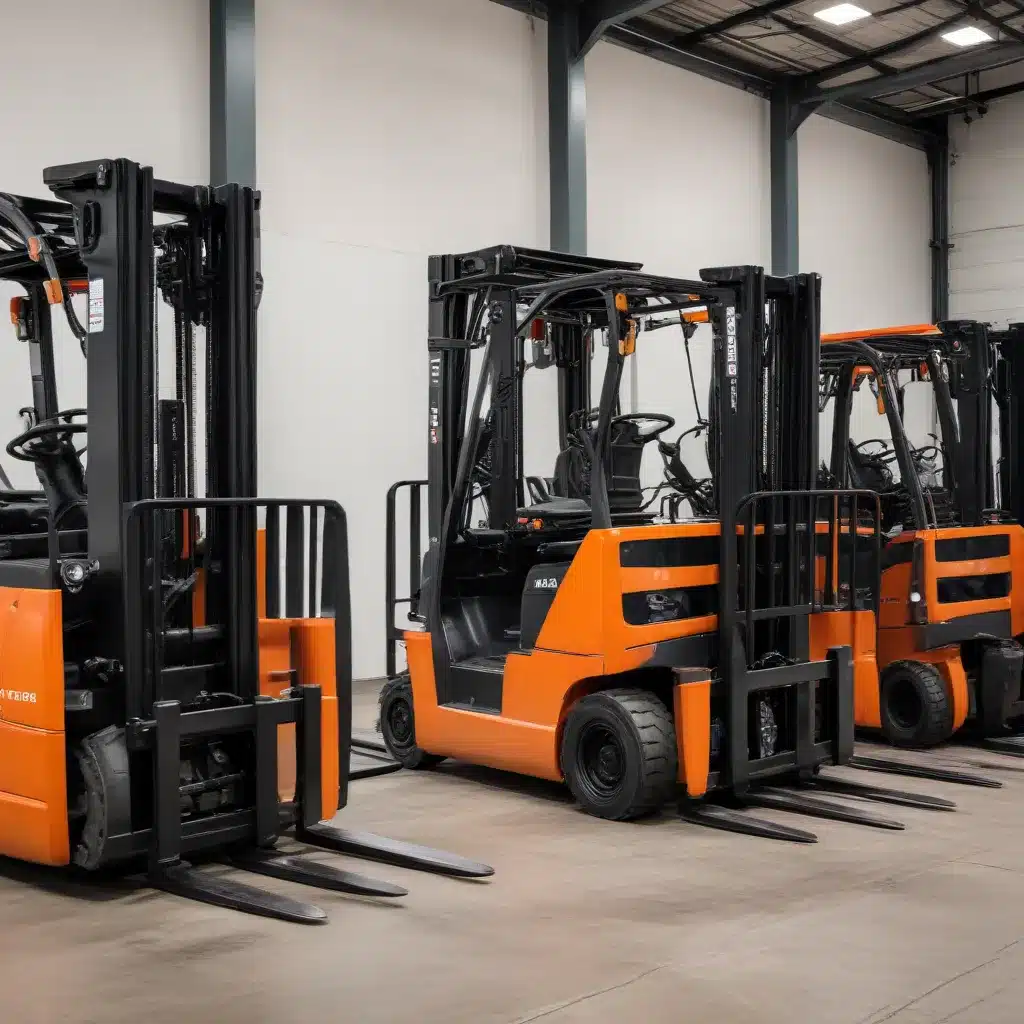
The Inevitable Shift Towards Electrification
The logistics and warehousing industry is undergoing a transformative shift, with the growing demand for sustainable and eco-friendly operations driving the widespread adoption of electric forklifts. As companies strive to reduce their carbon footprint and align with increasingly stringent environmental regulations, the transition to battery-powered material handling equipment has become a top priority.
However, this shift towards forklift electrification is not without its challenges. One of the most pressing concerns is the issue of battery degradation and replacement, which can have significant operational and financial implications for fleet managers. In this comprehensive article, we will delve into the intricacies of forklift battery management, exploring strategies to overcome the challenges and ensure a seamless transition to an all-electric future.
Understanding Forklift Battery Degradation
Forklift batteries, particularly those based on lithium-ion technology, are susceptible to a natural degradation process over time. This degradation can manifest in several ways, including reduced runtime, decreased charging capacity, and overall performance deterioration. Factors such as usage patterns, ambient temperature, and charging practices can all contribute to the rate of battery degradation.
One of the key contributors to battery degradation is the regular deep discharge and rapid recharging cycles that forklifts often undergo in high-intensity warehouse and logistics environments. This constant strain on the battery can accelerate the degradation process, leading to a shorter lifespan and the need for more frequent replacements.
Strategies for Optimizing Battery Lifecycle
To mitigate the challenges of battery degradation, fleet managers must adopt a holistic approach to battery management. This includes implementing best practices for battery usage, charging, and maintenance. By optimizing these strategies, you can extend the lifespan of your forklift batteries and minimize the frequency of costly replacements.
Intelligent Charging Protocols
Implementing intelligent charging protocols can play a crucial role in preserving battery health. This involves adopting charging methods that minimize the impact of deep discharge cycles and rapid recharging. For example, utilizing opportunity charging, where batteries are recharged during short breaks or downtime, can help reduce the strain on the battery and prolong its overall lifespan.
Additionally, incorporating smart charging systems that monitor battery health and adjust charging parameters accordingly can further enhance battery longevity. These systems can optimize charging rates, manage temperature, and implement equalization charging to ensure balanced cell performance.
Maintenance and Monitoring
Proper maintenance and regular monitoring of forklift batteries are essential for maximizing their lifespan. This includes regularly cleaning battery terminals, checking for corrosion, and ensuring proper water levels in flooded lead-acid batteries. Implementing a comprehensive battery maintenance program can help identify and address issues before they escalate, reducing the risk of premature battery failure.
Moreover, the use of advanced battery management systems (BMS) can provide valuable insights into battery health and performance. These systems can track critical parameters such as state of charge, temperature, and cell-level diagnostics, enabling proactive maintenance and replacement planning.
Operator Training and Awareness
Engaging forklift operators in the battery management process can also contribute to improved battery longevity. Educating operators on proper charging and handling techniques can help mitigate common practices that can accelerate battery degradation, such as:
- Avoiding partial charge and discharge cycles
- Properly connecting and disconnecting batteries
- Maintaining optimal charging temperatures
- Rotating battery use among forklifts to distribute wear evenly
By fostering a culture of battery awareness and responsible usage, you can empower your operators to become active participants in preserving the health of your forklift batteries.
Navigating Replacement Challenges
Despite the best efforts to optimize battery lifecycle, the eventual need for replacement is inevitable. When it comes time to replace forklift batteries, fleet managers must navigate a complex landscape of technological advancements, cost considerations, and logistical challenges.
Evaluating Battery Technology Options
The forklift industry has witnessed significant strides in battery technology, with various chemistries and form factors available. As you evaluate replacement options, it’s essential to consider factors such as energy density, power output, charge time, and overall cost of ownership.
While lead-acid batteries have been the traditional choice, the rise of lithium-ion and other advanced battery technologies offers the potential for improved performance, reduced maintenance, and longer lifespan. Fleet managers must carefully weigh the trade-offs between these options to ensure the best fit for their specific operational requirements.
Managing Replacement Costs
Forklift battery replacement can be a significant capital expense, and fleet managers must plan accordingly to mitigate the financial impact. Strategies such as proactive planning, battery leasing or subscription models, and incorporating battery health data into replacement decisions can help optimize the total cost of ownership.
Furthermore, exploring the potential for battery refurbishment or repurposing can offer cost-effective alternatives to full-scale replacement. By working with specialized service providers, fleet managers can extend the useful life of their forklift batteries, reducing the frequency of costly replacements.
Logistical Considerations
Transitioning to a new battery technology or managing large-scale replacements can pose logistical challenges. Factors such as battery size, weight, and power requirements must be carefully evaluated to ensure compatibility with existing forklift models and infrastructure.
Effective fleet management and coordination are crucial during the replacement process. This may involve scheduling downtime, ensuring the availability of appropriate charging stations, and coordinating with maintenance teams to minimize operational disruptions.
Embracing the Electric Future
As the forklift industry embraces the era of electrification, overcoming battery degradation and replacement challenges will be crucial for fleet operators to maintain operational efficiency and maximize the benefits of sustainable material handling solutions.
By implementing comprehensive battery management strategies, leveraging the latest technological advancements, and navigating the complexities of replacement, fleet managers can pave the way for a seamless transition to an all-electric forklift fleet. This not only contributes to environmental sustainability but also positions their operations for long-term success in the evolving logistics landscape.
To learn more about the latest forklift models, safety guidelines, and industry trends, explore the Forklift Reviews blog, your trusted resource for navigating the world of material handling equipment.

